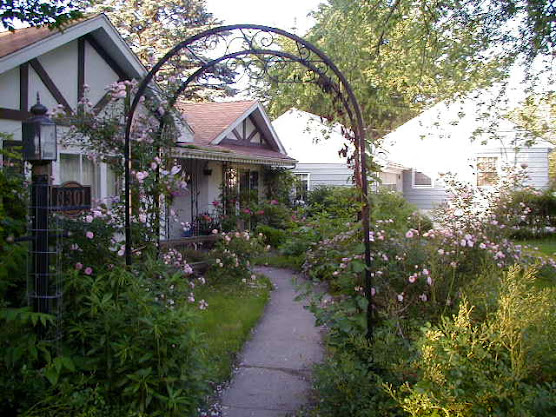African Violets
By Amy McDowell
After a couple of
weeks of frantic lunacy-driven Ebay bidding, packages of African Violet leaves
began arriving on my doorstep. Each leaf was packaged carefully in a plastic
bag with a label bearing its name. I lined them up, each in an empty plastic
6-ounce Sunny D bottle with the violet’s name taped on the side. I filled the
bottles with water and when I was finished, four dozen bottles sat under
fluorescent shop lights.
In a few weeks,
tiny new plants grew on each leaf and delicate white roots filled the makeshift
vases. In one marathon potting session, I settled each little plant into a
4-inch plastic pot filled with lightweight, soilless potting mix. I peeled the
labels from the plastic bottles and stuck them to the pots. As I struggled to
find space for all of them, at last I recognized my folly.
African Violets
are ideal houseplants. Thousands of varieties offer plant lovers a smorgasbord
of colors, styles and sizes. They are easy to care for, thriving and blooming
in ordinary household conditions. Their delicate nodding blooms arise from the
fuzzy foliage before unfurling in rich purple or red or pastels of every hue.
Grow African
Violets in bright light from a north- or east-facing window or under fluorescent
lights. Water from the bottom by filling the saucer with water, letting the
soil soak it up, and dumping out any leftover after a half an hour. Fertilize
as often as you want by adding one-quarter teaspoon of 20-20-20 or 15-30-15 to
a gallon of water. Mine bloom well even with infrequent fertilization.
Their fuzzy
leaves protect African Violets from most insects, but foliar nematodes are a
killer. The center of the plant starts to look like a tiny head of cauliflower
as the newest leaves are shrunken, contorted and white. Nothing can be done to
save them; throw the plant and the pot away. Be careful not to aid the spread
of the nematodes by letting the plants touch. Thoroughly wash your hands and
any tools, including the watering can, that have come in contact with an
infected plant.






